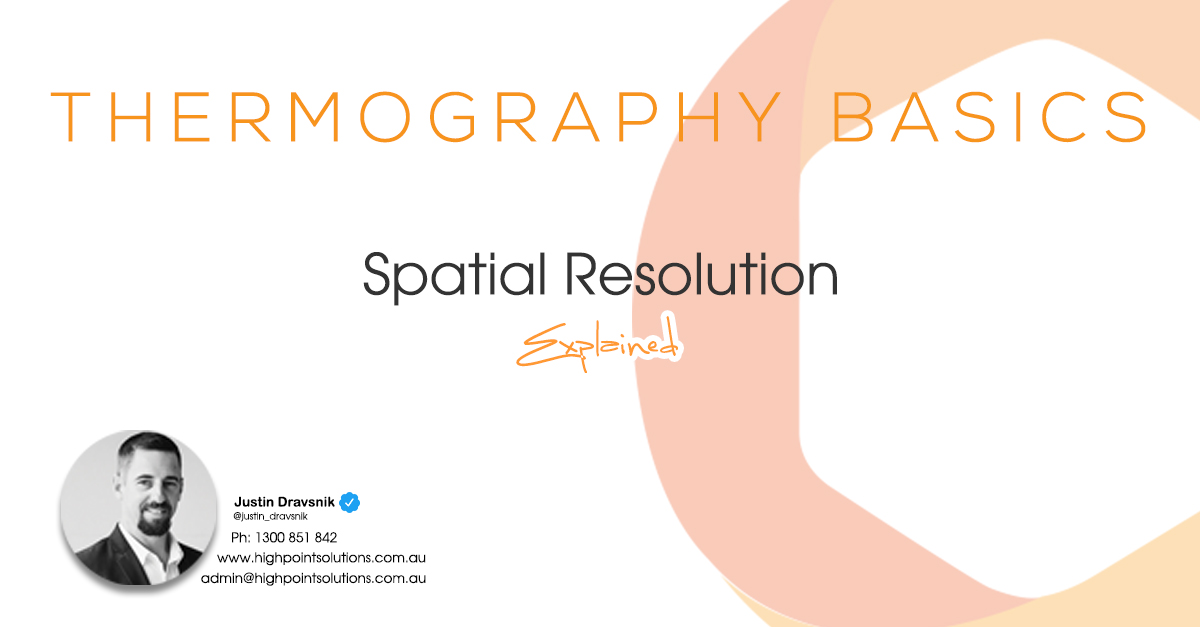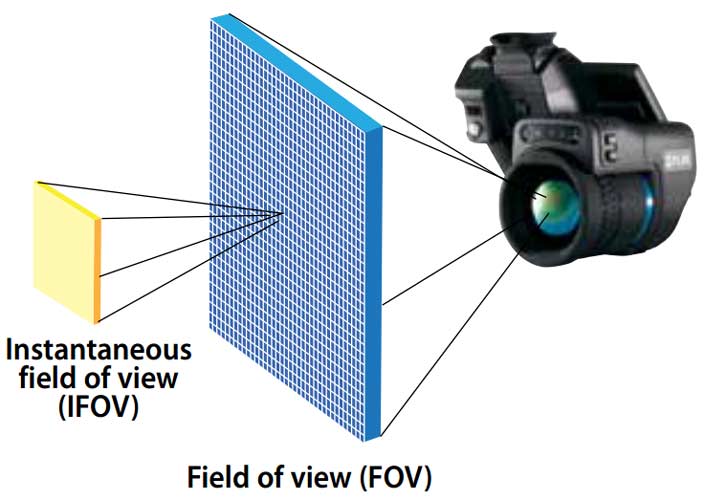
Spatial Resolution Explained

Spatial resolution, for an infrared camera, is based on detector pixels and the field of view (FOV) specification, combining them to define the area the imager sees at any given moment. Basically, the ability to accurately resolve detail and acquire temperature measurements of an object. Spatial resolution can be used to help define the smallest object size that can be detected. A lower spatial resolution value means better detail and image quality. Spatial resolutions enables us to determine how small a point can you resolve detail and accurately measure, and at what distance.
There are three components of spatial resolution:
Field of View (FOV)
Instantaneous Field of View (IFOV)
Measurement Field of View (MFOV)

FOV, or Field of View, is the largest area that your thermal imaging device can "see" at a set distance, and is defined by the lenses horizontal degrees by vertical degrees. E.g 45º x 34º. Note: the "degree" values are units of angular measurement, not degrees of temperature measurement. The image that your camera presents is built up of pixels which corresponds to your cameras thermal resolution E.g 16x16, 320x240, 640x480 etc.
IFOV, or Instantaneous Field of View, is the smallest detail within the FOV that can be detected or seen at a set distance. Instantaneous field of view or (IFOV) is an important calculation in determining how much a single detector pixel can geometrically resolve or "see" in terms of field of view (FOV).
MFOV (also known as IFOVm or measurement resolution), describes the spatial resolution for measurement and is simply the smallest detail that your infrared camera can accurately measure at a set distance. As a thermographer, it critical to understand that as the distance from the target object increases, the ability to accurately measure the temperature of the target is decreased.
Putting it all together.
Imagine you are driving down the highway. Think of the view from your windscreen as the Field of View (FOV). As you drive along you see a sign in the distance. You can "see" the sign but you can't "read" the writing on it because you're still too far away. Think of this as the Instanteneous Field of View (IFOV). As you continue to drive towards the sign you can now "read" the words, or in terms of thermography, "measure" the temperature. This is your Measurement Field of View (MFOV), and is the minimum distance you can accurately measure a temperature at a set distance.
If the target object is too small, or if you're too far away, you really only have three options:
1. Move closer to the target
2. Use a lens with a narrow FOV E.g. Telephoto lens
3. Use a combination of both
If you found this article of interest please feel free to share it with your network.
Recent Posts






